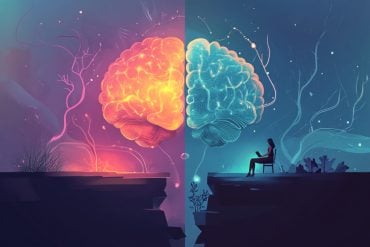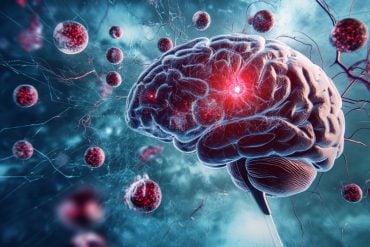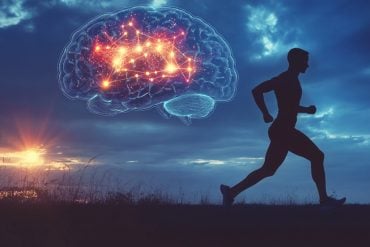Summary: In natural vision, visual memories of an image are affected by the size of the vision on the retina.
Source: Bar-Ilan University
Every day we encounter images on the wall, in newspapers, books, and electronic devices. Some become etched in our memory and some don’t. The elements influencing whether we remember one image and not the other aren’t yet known, but researchers have assumed that image size and memory aren’t connected to one another, since we usually understand what appears in an image, whether it is large or small.
A new study led by Dr. Sharon Gilaie-Dotan, of Bar-Ilan University’s School of Optometry and Vision Science and Gonda (Goldschmied) Multidisciplinary Brain Research Center, sought to determine whether large images are better remembered than small ones during natural daily behavior. Her assumption was based on the fact that large images require the visual system to utilize greater resources for processing them.
The results of the study, just published in the journal Proceedings of the National Academy of Sciences, show for the first time that in natural vision, visual memory of images is affected by the size of the image on the retina. These findings can have many implications, including on the use of different types of electronic screens and the quality of information processing when we rely on large vs. small screens.
Shaimaa Masarwa and Olga Kreichman, PhD students in Dr. Gilaie-Dotan’s lab, examined what happens to visual memory when participants were asked to look at pictures without knowing anything about a memory task to come. Each participant was shown different pictures in different sizes, each presented to them just once.
One hundred eighty-two subjects participated in seven different experiments. Time and time again the researchers found that the large images were better remembered (1.5 times more) than the small images. This phenomenon was not dependent on specific stimuli, the order in which the images appeared, their resolution, or the amount of information they contained.
To understand whether this result was determined by size rather than amount of detail, the researchers also examined whether large, blurred images are better etched in memory than clear, small images, where the large images contained the same details as the small images. To their surprise, they found that even in this case, the participants remembered the large, blurry images better than the small, clear images.
They also found that most images were better remembered when they were presented as bigger relative to when they were presented as smaller.
“In areas of the brain that represent the retinal image, more resources will be directed to processing large images than to processing small images because the processing is determined by the area of the retina that the image stimulates,” says Dr. Gilaie-Dotan.

She points out that additional factors may contribute to remembering large images, such as different eye movements, and more attention and interest that large images elicit.
The study was conducted on young adults aged 18-40, ages in which vision is completely developed but has not yet begun to age. Different ages may be affected by the size of the stimuli in a different way, since both age and experience with screens are quite different between young and old.
While the study examined only static images, the findings could have important implications on the “screen generation”, which consumes much of its information on small electronic devices.
“It is possible that even in dynamic images, such as videos, greater vision resources will be directed towards processing videos on large vs. small screens and, therefore, videos on the large screen will likely be better remembered,” says Gilaie-Dotan.
In addition many high schools textbooks today are available in electronic format, and students sometimes study on their smartphones. While the smartphone screen is handy and accessible, in practice the quality of learning may be better on a larger screen.
Gilaie-Dotan says that much follow-up research will be needed to understand how widespread the phenomenon is and whether it affects all processing in all situations, or only in some cases.
About this visual neuroscience research news
Author: Elana Oberlander
Source: Bar-Ilan University
Contact: Elana Oberlander – Bar-Ilan University
Image: The image is credited to Adar Winter (Vikki Academy)
Original Research: Open access.
“Larger images are better remembered during naturalistic encoding” by Sharon Gilaie-Dotan et al. PNAS
Abstract
Larger images are better remembered during naturalistic encoding
We are constantly exposed to multiple visual scenes, and while freely viewing them without an intentional effort to memorize or encode them, only some are remembered. It has been suggested that image memory is influenced by multiple factors, such as depth of processing, familiarity, and visual category.
However, this is typically investigated when people are instructed to perform a task (e.g., remember or make some judgment about the images), which may modulate processing at multiple levels and thus, may not generalize to naturalistic visual behavior. Visual memory is assumed to rely on high-level visual perception that shows a level of size invariance and therefore is not assumed to be highly dependent on image size.
Here, we reasoned that during naturalistic vision, free of task-related modulations, bigger images stimulate more visual system processing resources (from retina to cortex) and would, therefore, be better remembered. In an extensive set of seven experiments, naïve participants (n = 182) were asked to freely view presented images (sized 3° to 24°) without any instructed encoding task. Afterward, they were given a surprise recognition test (midsized images, 50% already seen). Larger images were remembered better than smaller ones across all experiments (∼20% higher accuracy or ∼1.5 times better).
Memory was proportional to image size, faces were better remembered, and outdoors the least. Results were robust even when controlling for image set, presentation order, screen resolution, image scaling at test, or the amount of information.
While multiple factors affect image memory, our results suggest that low- to high-level processes may all contribute to image memory.







